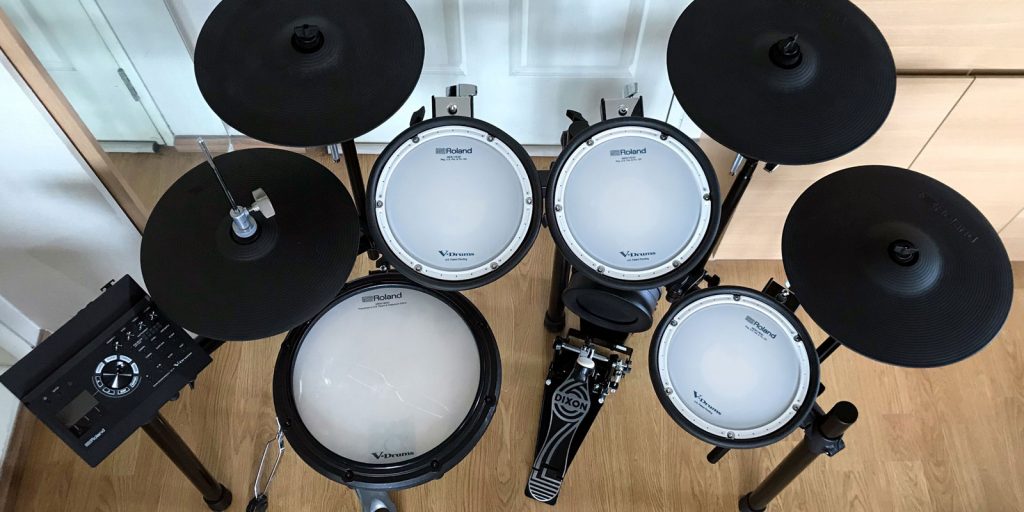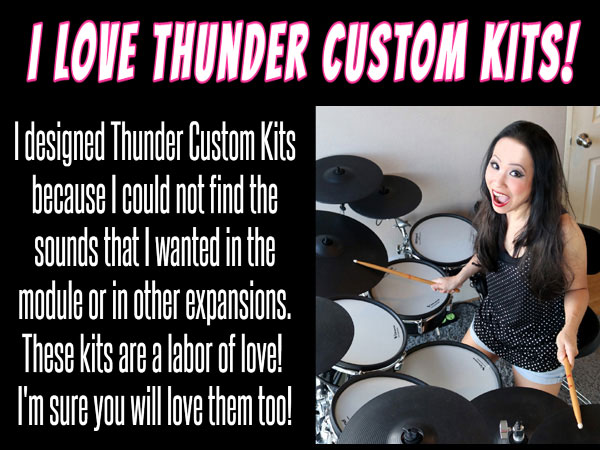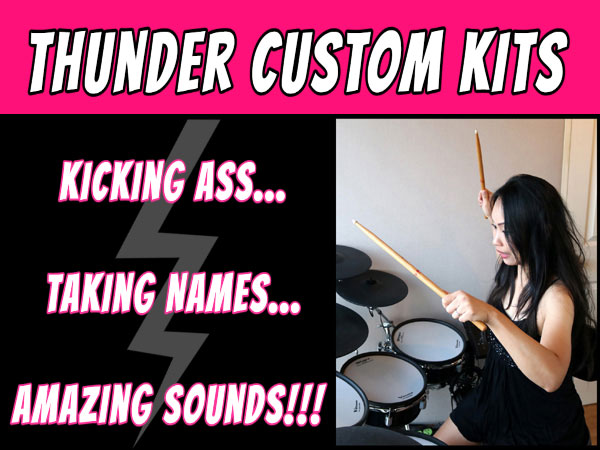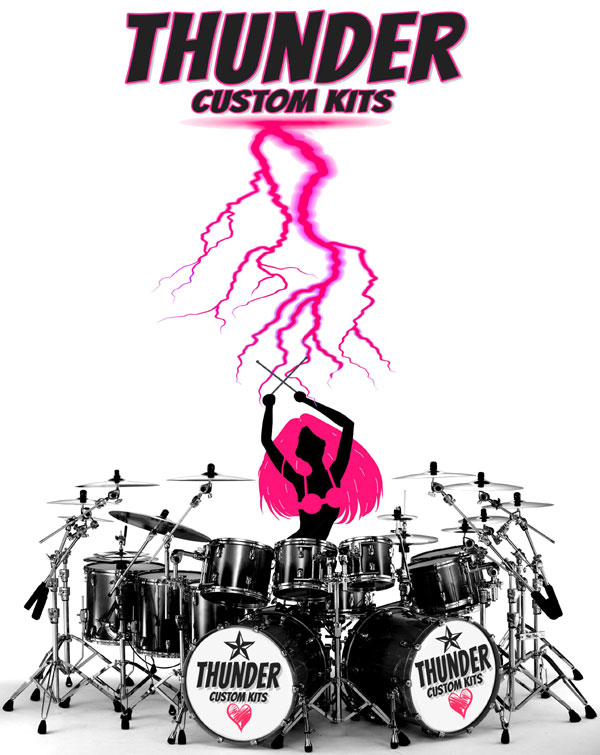
Are you having problems with too much electronic kick drum noise and vibration? Many people have issues with the sound and/or vibration traveling through walls, ceiling and especially floors, leading to confrontations with family, friends and neighbors.
No drummer wants to be a menace. They just want to be bale to play in peace and relative quiet. Electronic drums accomplish this goal admirably, but the kick drum really does tend to be a recurring problem for so many of us. With electronic kick drums growing larger and louder each day, this is a trend that I see continuing to worsen for the foreseeable future.
Much has already been written about the topic of loud kick drums and complaining downstairs neighbors. I will provide a summary of the best practices to eliminate this issue once and for all, given a variety of circumstances and kit designs. I can speak to this problem first hand, since my drum store and residence both share communal walls, ceilings and floors and my residence is located on the 29th floor of a high rise condo, complete with a dedicated drum room!
Electronic Kick Drum Noise and Vibration Woes
Sound traveling through the floor is possible, but can usually be rectified easily with some basic mitigation strategies. Sound has a better chance of traveling through walls and even more so of traveling through the doorway out of the room. Sound has a slight chance of traveling upwards and being heard by those above you.
Vibration is a different matter. Vibration really tends to travel through the floor and can be very disturbing for people below you. Vibration can also travel through walls and ceilings, but less often and with far less consequence.
Every component of your edrums makes noise when it is hit. Some noises are louder than others and some frequencies travel better and further than others. However, most edrum sets will simply not produce enough sound to really become a noise issue in many environments, unless the quality of construction is incredibly low.
However, vibration can travel through even quality construction. The tiny vibrations caused by hitting drum pads and cymbals with sticks is negligible. However, the much larger surface area of a kick beater hitting the bass drum head will produce direct vibrations into the floor that tend to descend and disturb. Vibration is actually the primary issue that edrummers face when dealing with “noise” issues.
Noise and Vibration Fixes Off The Set
The quality and type of construction will have a huge effect on how much noise and vibration are transmitted through surfaces. I have discovered that various room features and materials each have different effects on noise and vibration:
Wood floors really conduct sound and vibration, while concrete slab floors do not nearly as much.
Larger rooms tend to dissipate noise better than smaller spaces.
Placing drums near or against a wall will help them to conduct sound and noise through the wall, as well as up into the ceiling and down into the floor.
Placing drums near or against some types of window or door frames will also help conduct sound and vibration into walls, floors and ceiling.
Hard surface flooring tends to conduct sound and vibration better than soft surface flooring.
Hollow ceilings (false ceilings and dry wall) tend to act as a speaker and resonator for both sound and vibration, while solid ceilings do not conduct sound as much as vibration.
Whatever you can do to soften flooring in the room, use a larger room or use a room with better construction will solve some or all of your issues. Obviously if you have the drums on a higher floor in your home and only have noise downstairs, then moving them to the lowest floor will be an easy solution.
I recommend placing your drum kit on a couple of layers of puzzle mat foam, with the seams overlapping. I further recommend placing a thick, textured rug over this foam base. This will absorb lots of sound and vibration form most kits and be good enough to solve most noise issues in a typical residential environment.
If this approach does not solve your noise and/or vibration issue, then you might consider building an isolation riser to place your drum kit on. The so called “tennis ball riser” is difficult to beat for ease of construction and cost. There are tons of plans for it online on virtually all platforms, including written plans, forum discussions and videos. There are other more expensive and complicated types of platforms that can be built, but why? The tennis ball idea works just fine and will definitely solve your troubles in the vast majority of environments.
Trying to “sound proof” the room is not really needed or cost effective. If you are building a drum room for acoustic drums or live music as well, then you have a different situation. However, just for edrums, there really is no need to start attaching material to the walls and ceiling… It’s easier to put some textiles in the room that will absorb stray sounds and provide both a comfortable environment and another purpose (window treatments, couches, rugs, etc.)
Electronic Kick Drum Noise and Vibration Fixes On the Set
Besides treating the room, there are actually things you can do right on your drum kit to reduce sound and vibration. I use many of these myself and swear by their effectiveness:
You can change your kick beater. There are many low noise and low vibration beaters available. Effectiveness of this approach? Low to low moderate in my experience.
You can buy or make noise-eater platforms. Roland sells these at exorbitant cost. There are cheaper generics. They are made from material that does not transmit vibration and are used on the feet of the kick, hi hat and under the kick pedal to prevent downward transmission of sound waves and vibrations. Moderately to highly effective.
You can use kick pedal triggers and simply stop using a kick drum altogether. Many people use the Triggera kick triggers or similar designs. These are basically silent and work great. You can still have issues if the beaters are hitting anything, even if it is just a padded surface that does not seem to make any real sound. Remember, vibration can travel through the floor even if sound is not overly audible. Effectiveness of this approach? Moderate to high. Hitting an actual muffled drum using this approach will make things worse, not better!
Larger kicks drums tend to vibrate more. Using a smaller kick might help mitigate vibration, although probably not enough to justify the tradeoff. I tend to see more and more vibration complaints, since brands like Roland are going with larger and noisier kick drums with each new generation of kits, like the VAD line. Effectiveness of reducing kick drum size? Low to low moderate.
Actual mesh headed kicks might be quieter than pseudo-mesh styles, like the KD9 or KD10. Although these kicks feel surprisingly nice, they do produce both a distinct slap sound and vibration, while full mesh kicks like the ATV aDrums aD-K18 is much larger, but much softer in sound (as well as better in feel). Larger kicks with a mesh head can still be loud and might still produce lots of vibration. Effectiveness of this approach? Low.
Substituting a self contained trigger pedal with integrated noise isolation is a complete solution for many players, including me. I started using Roland KT10 pedals many years ago to mitigate noise issues on my huge metal kits and never looked back. All of my sets utilize 2 KT10 pedals and I have never had a single complaint in store or at home. I love them! Effectiveness of this approach? Very high.
So, here are your best options to solve noise and vibration issues. You can combine these strategies to see what works well for you. The main thing you can do is to be cooperative and calm when dealing with complaints. I am sure that with some testing and diplomacy, you will solve your troubles and get back to peaceful practice for you and those around you.
Let me know if you have a different suggestion for dealing with noise and/or vibration! I am happy to add your ideas to this post! Thanks.







